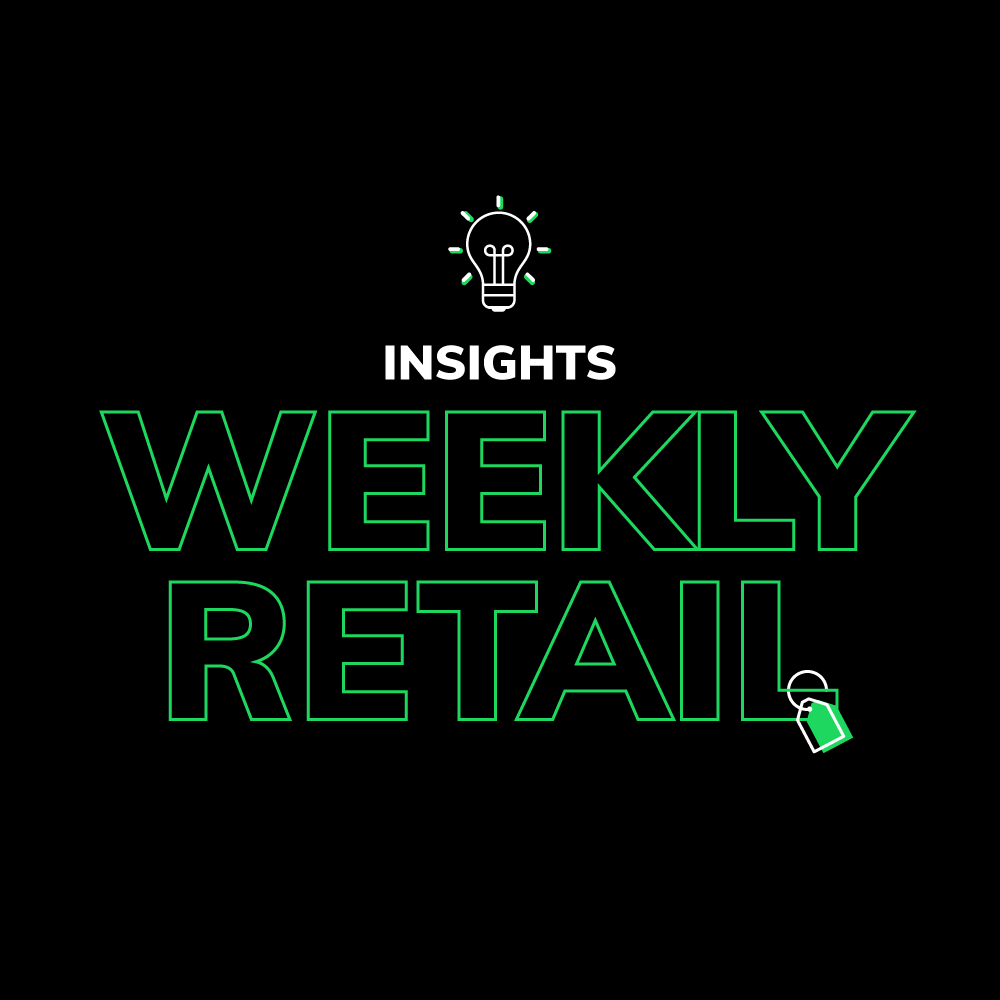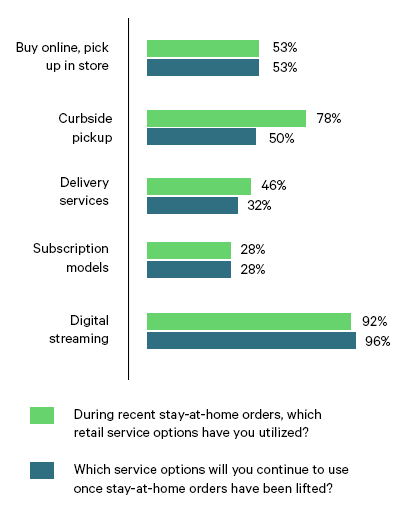Retailer Spotlight
Brick-and-mortar retail is getting hit pretty hard, especially smaller mom-and-pop shops. Minimal-touch shopping is one way to help. Such technologies already exist that can make it happen.
The first big retailer to test minimal-touch buying is Amazon Go Grocery. Customers sign in to their Amazon account with their mobile devices when entering a store. Packaging-based RFID tags track what items a customer grabs off the shelf, and customers are automatically billed when they leave.
The use of RFID and bluetooth technology will be more commonplace in the world of touch-free shopping, providing a seamless mobile handoff that transfers content to a shopper's mobile phone without ever coming into direct contact with anything in-store. Similarly, QR codes and barcodes can be scanned to migrate consumer reviews and product information directly to mobile devices. Digitizing the shopping experience at the customer/product level also allows for seamless shipping of products to customers’ homes without even touching the product.
Some retailers are already developing virtual shopping experiences. Emporium, a Denver-based market-style retailer, has created “Girls Night Out,” a virtual shopping experience designed to be a social experience as consumers shop from home. Employees capture video of the 60 individual vendors in the space to be broadcast as an evening happy hour. Viewers can see products from each vendor and select items to add to their virtual carts. The company has also partnered with a local bistro to provide take-out food, so consumers can complete the “dine and shop” experience.
MERGE Viewpoints
This month, we asked our in-house retail experts to provide their perspectives on brands that are providing surprising responses to COVID-19. Here’s what a few of them had to say:
Ryan, TikTok
TikTok is arguably the most popular destination for the quarantined. According to Sensor Tower, TikTok was the top downloaded app worldwide in March 2020, with over 115 million installs during that time. TikTok has responded by pledging $375 million in relief. Specifically, they’ve leveraged their cash to provide actual funding to healthcare organizations to support staff and supplies along with funding for organizations that support communities hardest hit by the COVID-19 pandemic. Among that $375 million, TikTok has offered $100 million in ad credits to help spread the word across their vast and growing audience base for NGOs, health authorities and local governments.
Kelly, Uber
Have you seen the new Uber commercial? For a company and brand built on getting people where they need to go, their current commercial is 60 seconds of people staying in one place and NOT using their services. The central message: “Stay home for everyone who can’t. Thank you for not riding with us.” It’s a refreshing message that resonates with the public, promotes a positive sentiment and was an unexpected surprise from a company I was expecting to be much more selfish in the long run. It’s refreshing to see a transportation-focused brand encourage people to stay at home, promoting what is in the country’s best interest, over their bottom line.
Nicole, Rothy's
As a Direct-to-Consumer fashion brand that originated with a heart for social responsibility, Rothy’s has stayed true to their purpose and refocused efforts to support the nation. The brand has launched an innovation coalition, and is speaking with customers and similar brands (such as Third Love) to discuss thoughtful ways to contribute to making a positive impact during the pandemic. In response to their learnings, they are now making masks with sustainable materials to support medical workers nationwide. Disruptive times call for purposeful measures, and Rothy’s is doing a fabulous job of conveying innovation through new product launches and supporting the community in such a trying time.
Shopper Insights
As retailers begin adjusting to new shopping routines, it’s important to consider how some of the consumer behavior trends that emerged pre-COVID-19 will also change in the near future. According to Forbes, these are three shopping trends retailers should take note of as consumers start to return to brick-and-mortar locations:
1. Increase in single-use plastic bags. Amidst the outbreak of the virus, state and local governments began to lift bans and fees for single-use plastic bags, and a majority of retailers are even temporarily banning the use of reusable bags. Consumers are also seeking more single-use and disposable products.
2. Return of traditional service. Consumers are used to self-service practices in most retail locations. Retailers are currently adjusting by increasing cleaning procedures, but some of these self-serve opportunities could phase out to reduce the number of hands on products. A few gas station chains are even bringing back attendants to pump gas for customers to prevent the spread of COVID-19.
3. CPG giants make a comeback. Consumers are seeking familiarity while maintaining frugality which is likely to stay true as the future remains uncertain. Insert Kimberly-Clark and P&G, two of the household giants that were losing a bit of steam to startup brands, but have recently seen soaring numbers in sales.
As the virus shapes how consumers shop, the need for retailers to be nimble remains. The ability to think strategically, adjust policies and keep the well-being of customers and employees at the forefront of any changes, will continue to build brand loyalty and trust.
Show of Hands
Every month, we poll our fellow employees and social media followers to gain real-time insight on what’s topical and trending in the world of retail. This month’s question:
During recent stay-at-home orders, which retail service options have you utilized, and which services will you continue to utilize once the orders have been lifted?
Wise Words
“Like most retailers, we don’t know exactly where we will land at the end of it, but our curiosity and willingness to create will be a guide for us.”
– Jesper Brodin, CEO, IKEA





